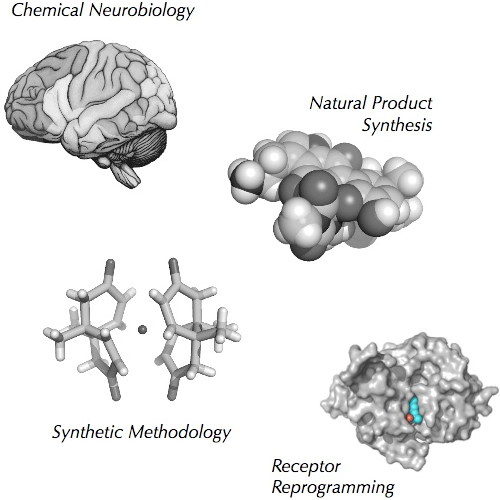Light Commands Ion Channel
04-Nov-2009
Chemical & Engineering News, 2009, published on 04.11.2009
Online article
Online article
Chemical Biology: Photosensitive reaction opens or shuts potassium's flow. Drugs that are modulated by light may have a more controllable cousin on the horizon. Researchers led by Dirk Trauner, a chemist at the University of Munich, have figured out the mechanism by which molecules with the ability to block voltage-gated ion channels can be turned on and off repeatedly by light. Because ion channels are at the foundation of human perception, these light-sensitive ion channel blockers, also called photochromic ligands, could one day be used in light-controlled anesthesia or vision restoration, Trauner says. Light has long been used to activate drugs, leading to several successful so-called photodynamic therapies, such as those for treating cancer. More recently, Trauner and his colleagues have spearheaded an effort to turn on molecules that target biological proteins—and then turn them off again—by means of light-activated cis-trans isomerization, an emerging field they call photopharmacology. Early photochromic ligands could bind only to ion channels that had been genetically modified to permit attachment. Last year, Trauner and colleagues reported an azobenzene molecule dubbed AAQ that can photosensitize naturally occurring voltage-gated potassium channels in neurons (Nature Methods 2008, 5, 331). Now the team is reporting AAQ’s mechanism of action, along with a whole family of related azobenzenes that can block voltage-gated potassium ion channels in a photo-controllable manner (Angew. Chem. Int. Ed., 10.1002/ange.200904504). In particular, the team finds that AAQ diffuses into brain cells and binds noncovalently in an area of the channel interior in which potassium ions would normally pass. In the trans configuration, AAQ blocks the channel, whereas in the cis configuration, it allows potassium ions to flow. Given the similar structure, function, and pharmacology of voltage-gated ion channels, Trauner's "beautiful" new study points to the possibility of creating photochromic ligands for other such channels, such as voltage-gated calcium channels, comments Stefan Herlitze, a neuroscientist at Case Western Reserve University. One could imagine that specific light-gated blockers could trigger the firing of neurons, which could also be important in heart disease, he adds. But unless the molecules are made selective for specific channels in specific cell types, their therapeutic potential will be limited, say other researchers, including biochemist Timothy Ryan at Cornell University. "We are also concerned with selectivity," Trauner says. In as-yet-unpublished work, his group has found that the molecules can be made more selective by chemically tweaking their hydrophobic tails.











